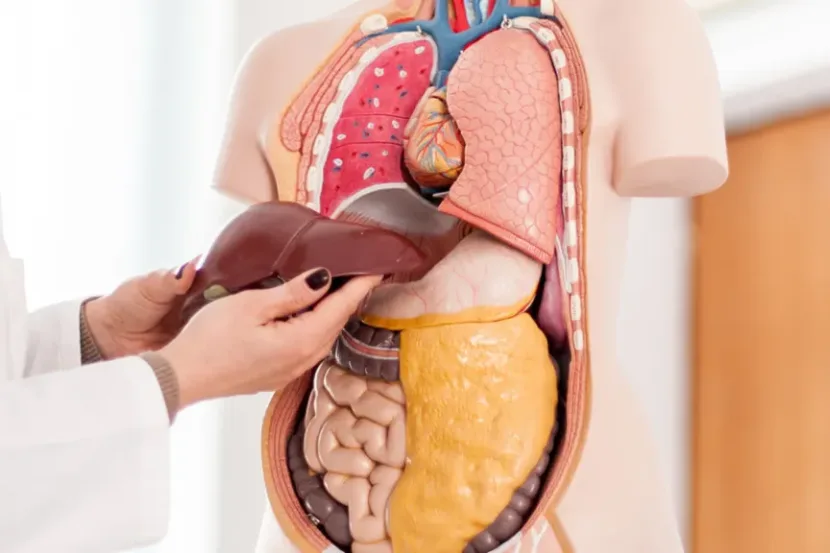The liver is the powerplant of human beings. It’s an organ only found in vertebrates (animals with a backbone), and detoxifies various metabolites, synthesizes proteins, as well as produces biochemicals necessary for digestion and growth. In humans, it is located in the right upper quadrant of the abdomen, below the diaphragm. What has Chaga got to do with your liver?
Numerous functions of this organ are crucial for our body. The liver stores excess glucose and turns it into energy. This important organ is also vulnerable to various diseases. One of the most widely known diseases being fatty liver. Diets high in starch and sugar are named as the causes.
If you’re on the journey of healing your liver, turns out that Chaga can be a great support. The fungus is a natural anti-inflammatory, antiviral, metabolism-stimulating, and has very high antioxidant-rich properties.
Causes of fatty liver
Fatty liver disease, otherwise known as steatosis is a common condition caused by having too much fat build up in your liver. A healthy liver contains a small amount of fat. The problem arises when fat reaches 5% to 10% of your liver’s weight.
There are two main forms of fatty liver disease:
01. Alcoholic liver disease
Alcoholic fatty liver is the accumulation of fat in the liver as a result of heavy drinking, meaning more than two to three drinks a day.
02. Nonalcoholic fatty liver disease
Nonalcoholic fatty liver disease occurs in people who aren’t heavy drinkers. Researchers haven’t found the exact cause of nonalcoholic fatty liver disease. But several factors, such as obesity and diabetes, can increase your risk.
In general, there are 3 pillars: fatty liver can be the result of disease, poor diet, or medication. There are numerous medications, such as paracetamol, as a famous example, that can only be metabolized by the liver. If these medications are taken too often, the liver will end up damaged.
Here’s a great video explaining fatty liver disease by Dr. Rajsree
Symptoms of a fatty liver disease
People with fatty liver disease often have no symptoms until the disease progresses to cirrhosis of the liver. The early symptoms of fatty liver aren’t specific. Those affected have been reported feeling oddly tired, exhausted, and having abdominal symptoms such as bloating, loss of appetite, and sensation of pressure.
Since the liver has no nerve cells, patients do not experience any pain. The sensation of pressure occurs when the liver becomes enlarged. The diagnosis is made via ultrasound. Supporting your damaged liver is rather simple, it involves a change of diet. In cases of alcohol-related fatty liver, the only solution is to stay away from alcohol. Those with fatty liver will need to work on their weight – abdominal fat, in particular, can cause further problems.
Since there are no medications or surgical interventions available that could help, patients need to work on changing their habits individually. Turns out that incorporating Chaga into your diet can help a great deal!
Chaga preventing and slowing down liver problems
Chaga is a natural anti-inflammatory, and inflammation is often the result of a weakened liver. The mushroom helps to fight against exactly that. A weakened organ or weakened immune system is susceptible to infections. Chaga on the other hand stimulates the production of immune cells through its immune-boosting effect, which makes the body more resistant to invading viruses and bacteria. The antiviral effect of Chaga ensures that viruses, for example, hepatitis viruses can be eliminated.
Oxidative stress is one of the fuels of chronic liver diseases. Due to Chagas parasitic properties, it does a great job of eliminating oxidative stress. The antioxidants found in the fungi fight the radicals. The ORAC (Oxygen Radical Absorbance Capacity) score in Chaga is highest among natural foods. Which helps to defense against the inescapable free radicals.
If the cause of fatty liver is another disease, a different approach should be used. Chaga can help lower high blood pressure, as well as high blood sugar levels associated with diabetes. It can also help lower LDL cholesterol, which is known for damaging the heart and blood vessels. For patients who carry excess weight, Chaga’s metabolism-stimulating effect can help reduce weight.
How to consume Chaga?
Chaga shouldn’t be eaten raw or cooked like other types of mushrooms. It is a hard, dense polypore mass, that’s properties need to be extracted. The extraction requires prolonged simmering or soaking. This process makes the beneficial components bioavailable to the human body – meaning the body is able to absorb the nutrients.
Traditionally, the polypore is broken up into small pieces, then boiled to make tea. The fungus is removed before drinking the tea. It is also commonly finely powdered and mixed into liquids. As well as combined with binders to make a salve or medicinal application.
Chaga tinctures and teas are extremely popular nowadays. Making a Chaga infusion in the form of tea or tincture is relatively easy, as long as you have the fungus available.
How often to consume chaga?
When talking about liver support two of Chaga tea in a day is great for boosting your health. When dealing with a more serious health concern, we’ve heard of people drinking six to eight cups of tea daily. If you don’t suffer from any side effects, we encourage you to keep the dosage high. Make sure to test out how your body reacts to Chaga.
The truth is you won’t feel any immediate effects from consuming the fungus. The benefits accumulate over time, with long-term use. So it’s best to get into a habit of incorporating the superfood into your diet through various products and recipes.
If you don’t have access to the raw fungus, there are quite a few companies nowadays selling Chaga powder, tinctures, coffees, teas, and supplements. Most health food stores have the super-fungus available in some form. Before making your purchase at a store or online, be sure you trust the company and its harvesting practices.










